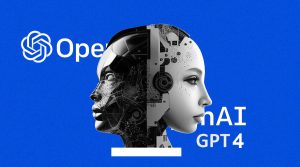Ensuring the safety and integrity of content generated by AI, especially in platforms like free online ChatGPT, involves a multifaceted approach. Developers and researchers continuously work to enhance these measures, striving for a balance between user freedom and content safety. This article explores the various strategies and technologies employed to mitigate the risks of generating harmful content.
Content Moderation Policies
Implementation of Filters
Developers have implemented sophisticated filters that automatically detect and block a wide range of harmful content. These filters are designed to identify specific keywords, phrases, and patterns associated with harmful narratives or unsafe content. By continuously updating and refining these filters, ChatGPT can adapt to new forms of harmful content that emerge over time.
User Feedback Mechanisms
ChatGPT relies on its user base to improve content moderation. Users can report outputs they consider harmful or inappropriate. This feedback is invaluable for training the AI to recognize and avoid generating similar content in the future. The system aggregates user reports to identify and prioritize areas for improvement.
Technological Innovations
Machine Learning Algorithms
Machine learning algorithms are at the heart of ChatGPT's ability to distinguish between harmful and safe content. These algorithms undergo extensive training using datasets that include examples of both acceptable and unacceptable content. By analyzing these examples, ChatGPT learns to generate responses that align with content guidelines.
Continuous Learning and Adaptation
ChatGPT's architecture allows it to learn from its interactions. This means that every piece of feedback and every content moderation challenge becomes a learning opportunity. The system uses these insights to refine its responses, reducing the likelihood of generating harmful content over time.

Ethical and Legal Standards
Compliance with Global Standards
ChatGPT adheres to a set of ethical and legal standards that guide its content generation. These standards are informed by global best practices in digital communication and content moderation. By aligning with these standards, ChatGPT ensures that its generated content does not violate laws or ethical norms.
Transparency and Accountability
Transparency in how ChatGPT handles content moderation is crucial. The developers provide detailed documentation on the mechanisms in place to prevent harmful content generation. This transparency fosters trust among users and stakeholders, ensuring accountability in ChatGPT's operations.
Challenges and Limitations
Despite these measures, preventing harmful content generation completely is a significant challenge. The nuances of language and the vast scope of potential harmful content mean that no system can be perfect. However, the ongoing improvements in AI technology and content moderation practices are continuously reducing these risks.
Conclusion
Preventing the generation of harmful content in AI systems like ChatGPT is an ongoing process that involves technological innovation, ethical considerations, and user engagement. Through the implementation of advanced filters, the leveraging of machine learning algorithms, and adherence to ethical and legal standards, ChatGPT strives to create a safe and positive experience for all users. As AI technology evolves, so too will the strategies to mitigate the risks associated with harmful content generation.